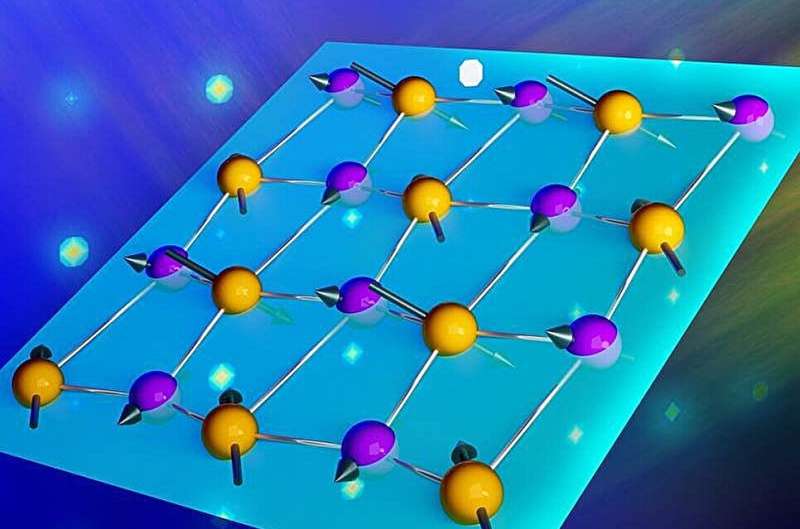This article has been reviewed according to Science X's editorial process and policies. Editors have highlighted the following attributes while ensuring the content's credibility:
fact-checked
peer-reviewed publication
trusted source
proofread
Researchers make a surprising discovery: Magnetism in a common material for microelectronics

Nickel monosilicide (NiSi) is widely used to connect transistors in semiconductor circuits. Earlier theoretical calculations had incorrectly predicted that NiSi was not magnetic. As a result, researchers had never fully explored magnetism in NiSi.
Recently, however, scientists used neutron scattering to identify an elusive form of magnetic order in NiSi. The research is published in the journal Advanced Materials.
The magnetism consists of magnetic spins (a little like compass needles) of neighboring nickel atoms. These spins primarily point opposite to each other with a small collective tilt in one direction. The magnetism persists at temperatures well above the operating temperature of electronics. Moreover, this magnetism can be flipped with small magnetic fields.
Because NiSi is extensively used by the semiconductor industry, it is already compatible with chip manufacturing. Physicists used neutron scattering at the Spallation Neutron Source, a Department of Energy user facility at Oak Ridge National Laboratory, to uncover magnetic order in single crystal NiSi that had not been previously known.
The magnetic order is primarily non-centrosymmetric (lacking inversion symmetry) and antiferromagnetic (AFM) with a slight canting of spins yielding a very small uncompensated magnetization. The order persists to temperatures of at least 700 Kelvin—well above the operating temperatures of electronics.
The uncompensated magnetization can be fully switched by small magnetic fields, and magnetic fields can also perturb the underlying AFM order. The uncompensated magnetization, though small, is crucial to the observed anomalous Hall effect (coupling of the magnetic and electronic properties) which is remarkable for a predominantly AFM material.
The robust magnetic structure and coupling of magnetic-electronic properties of NiSi offer the opportunity to use NiSi for magnetic memory applications. The research team also applied density functional theory combined with the self-(electron) interaction correction method (instead of using the local density approximation) to identify the origin of magnetism as arising from hybridization between Ni 3d orbitals and Si sp states.
Harnessing the newly discovered magnetism of NiSi in semiconductors may lead to faster computers and computer memory. The unique magnetism in NiSi is attractive because electronics that use magnetism to store and process data are reliable, fast, and small. The result is increased capabilities at lower costs. The work also highlights the need for improvements in how scientists apply conventional modeling to certain materials.
More information: Pousali Ghosh et al, NiSi: A New Venue for Antiferromagnetic Spintronics, Advanced Materials (2023). DOI: 10.1002/adma.202302120
Journal information: Advanced Materials
Provided by US Department of Energy




















